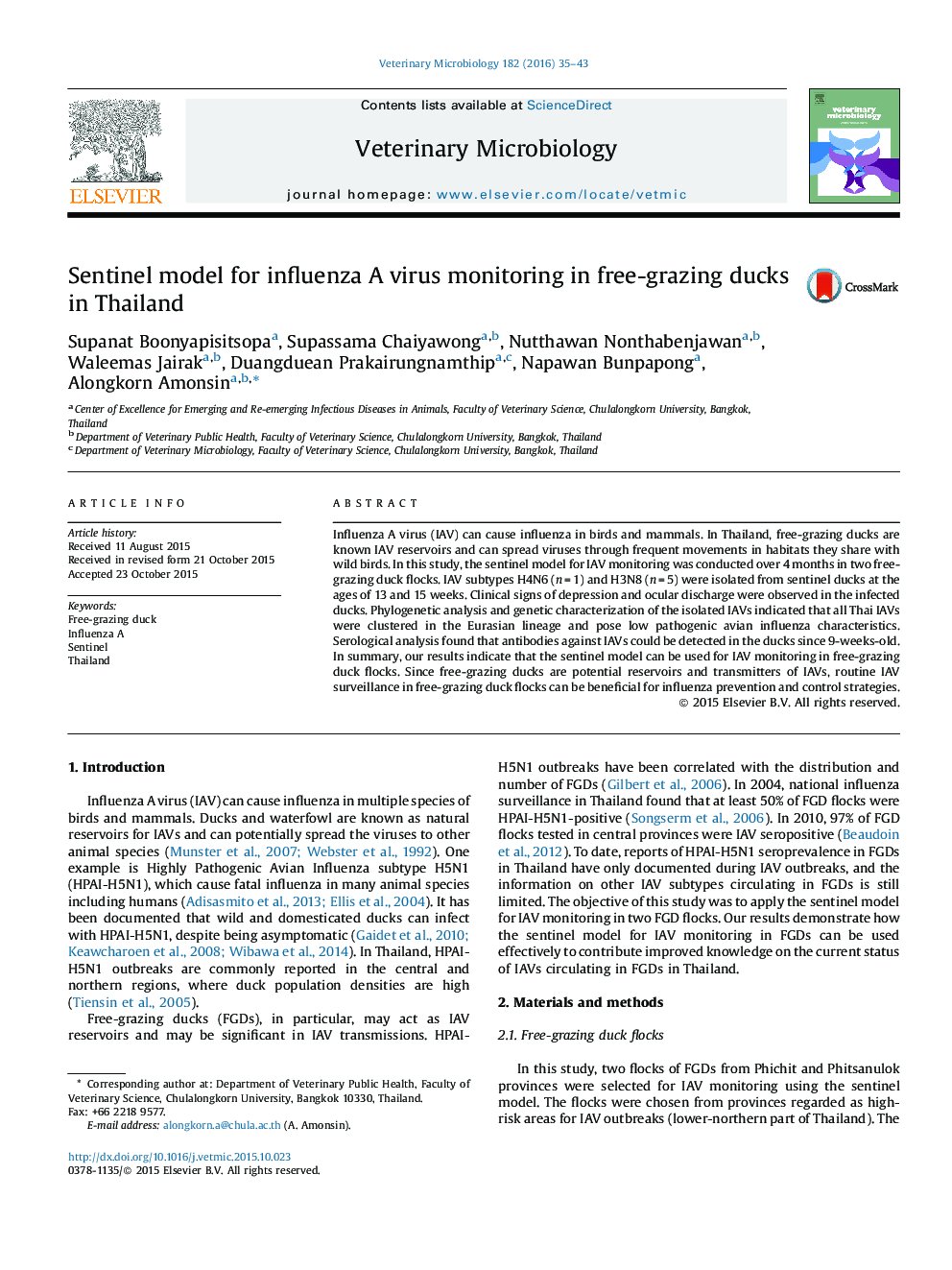| Article ID | Journal | Published Year | Pages | File Type |
|---|---|---|---|---|
| 2466485 | Veterinary Microbiology | 2016 | 9 Pages |
•We used sentinel model for influenza monitoring in free-grazing duck flocks.•Influenza subtypes H4N6 and H3N8 were isolated from the sentinel ducks.•Thai influenza subtypes H4N6 and H3N8 were clustered in the Eurasian lineage.•Antibodies against influenza could be detected in the sentinel ducks.•Sentinel model can be used for influenza monitoring in free-grazing duck flocks.
Influenza A virus (IAV) can cause influenza in birds and mammals. In Thailand, free-grazing ducks are known IAV reservoirs and can spread viruses through frequent movements in habitats they share with wild birds. In this study, the sentinel model for IAV monitoring was conducted over 4 months in two free-grazing duck flocks. IAV subtypes H4N6 (n = 1) and H3N8 (n = 5) were isolated from sentinel ducks at the ages of 13 and 15 weeks. Clinical signs of depression and ocular discharge were observed in the infected ducks. Phylogenetic analysis and genetic characterization of the isolated IAVs indicated that all Thai IAVs were clustered in the Eurasian lineage and pose low pathogenic avian influenza characteristics. Serological analysis found that antibodies against IAVs could be detected in the ducks since 9-weeks-old. In summary, our results indicate that the sentinel model can be used for IAV monitoring in free-grazing duck flocks. Since free-grazing ducks are potential reservoirs and transmitters of IAVs, routine IAV surveillance in free-grazing duck flocks can be beneficial for influenza prevention and control strategies.
